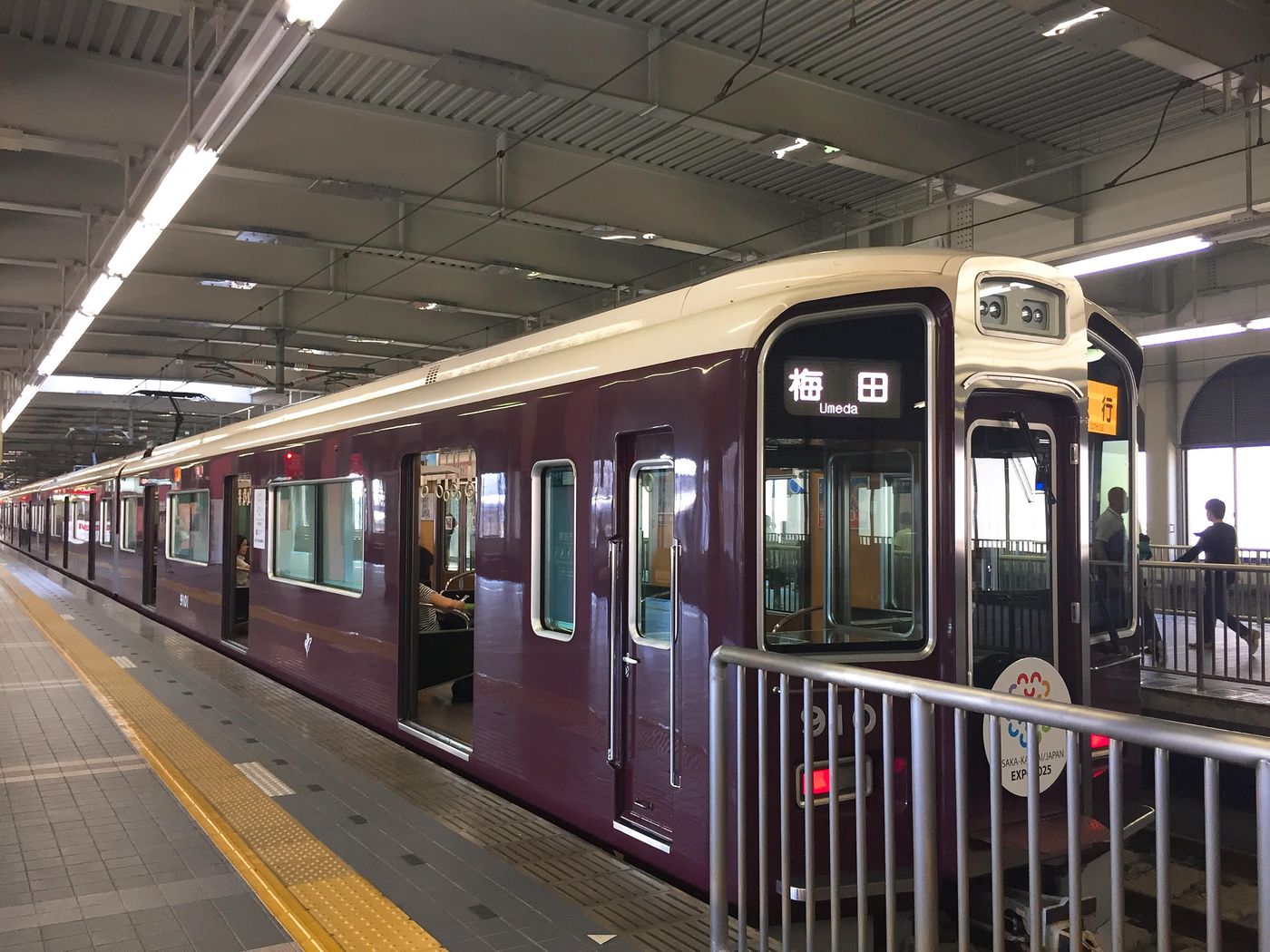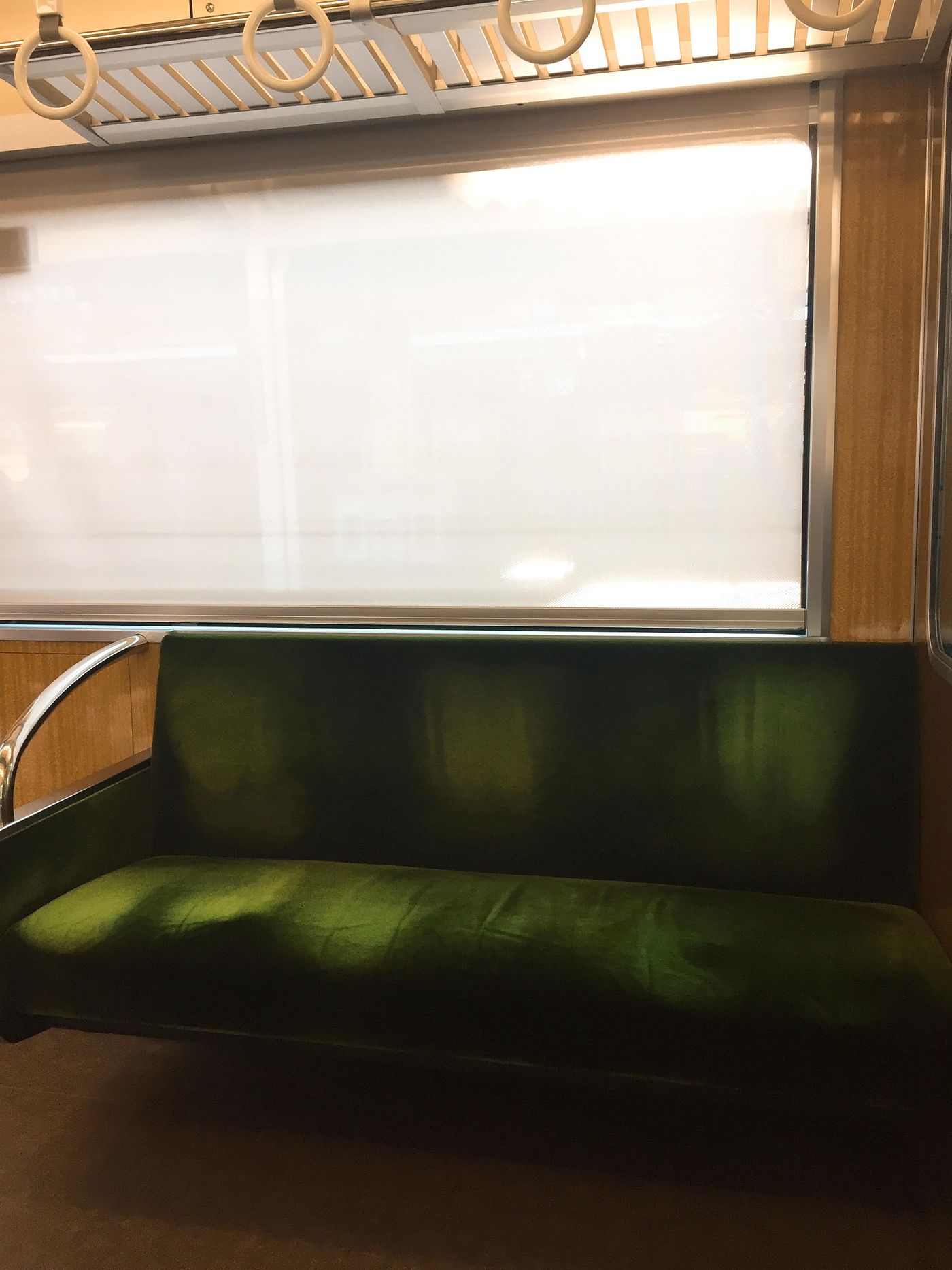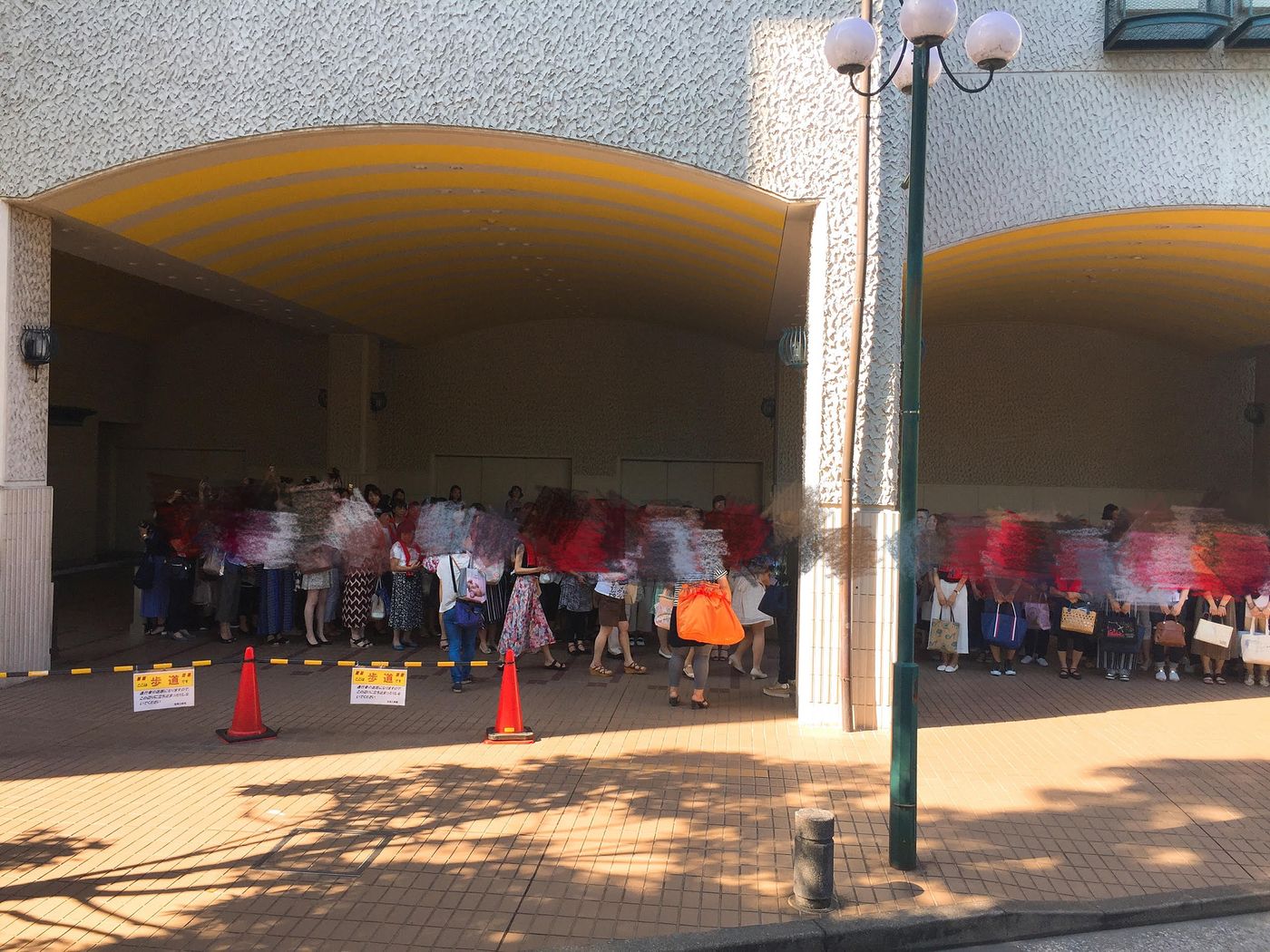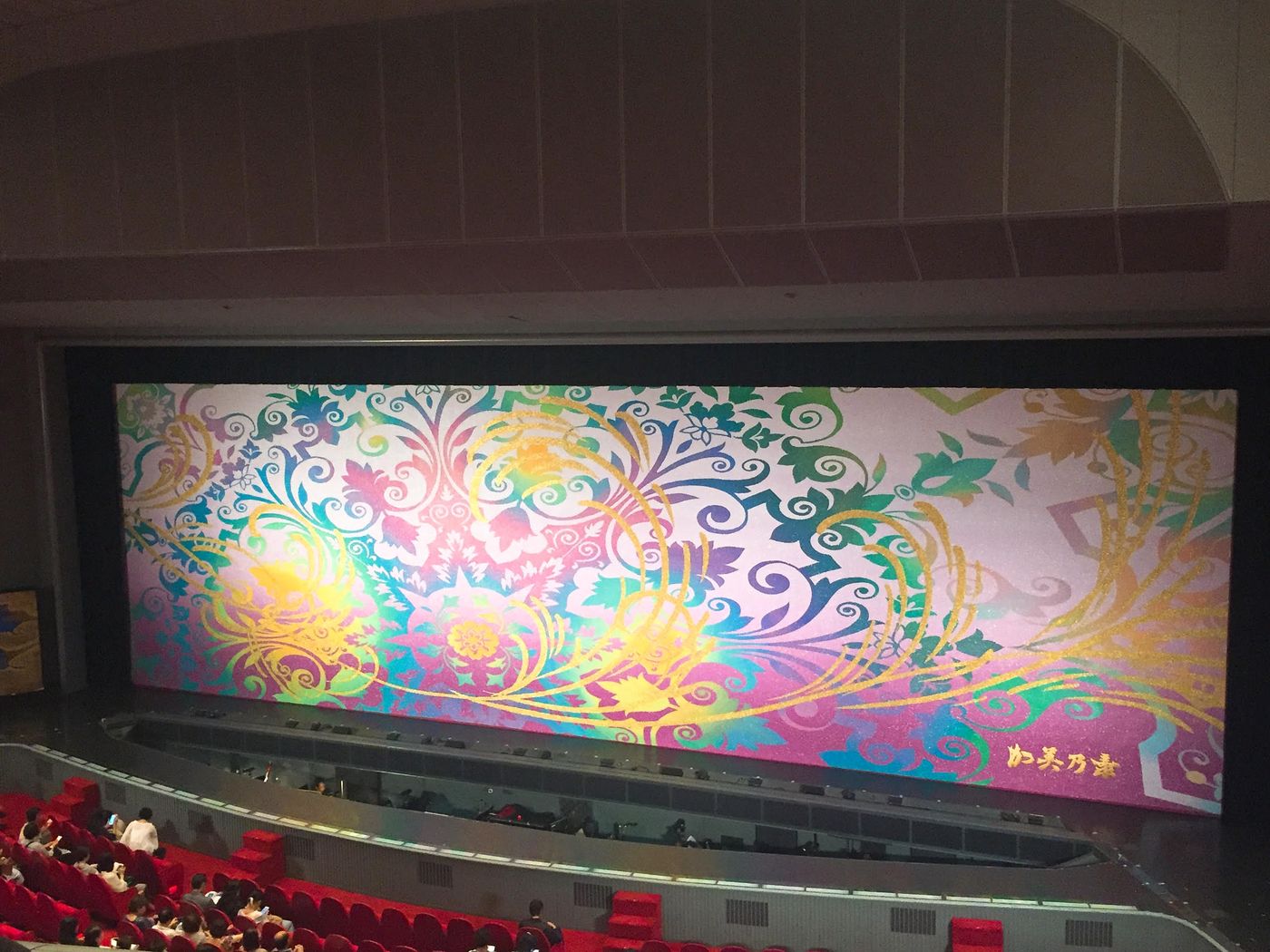
無法成為又正又甜美的方糖少女,那就朝半文藝半荒唐的路線前進吧<3
The century-old girl opera troupe was founded to save the tram company that was on the verge of bankruptcy!?
In an episode of the Japanese variety show "Secret のケンミンSHOW" (Taiwan translation: Miao National Picket Team), one episode discussed the image of the five major private railways (private railways) in Kansai in the hearts of residents, in which everyone said "Hankyu Electric Railway" "Because the car body is a calm dark jujube color, this color also has a proper name "Hankyu chestnut (Hankyu マルーン) ", the flannel chairs in the car feel very high-end, and passing through high-end residential areas, so it gives people tall and tall a feeling of. Among them, the end point of the "Hankyu Treasure Line" is the "Hankyu Grand Theater", the base of the "Hankyu Opera Troupe", the most dazzling department of the Hankyu Group.
The Baoshan Opera Troupe, located in Baoshan City, Hyogo Prefecture, was established in 1914. The actors are all women. The predecessor was the girl Baoshan singing group. , was established to attract people to take the tram to Baoshanlai. It has a history of 107 years and has about 420 members. It is a highly popular theater group that holds more than 1,400 performances in Japan every year. He has a lot of fans all over the world and often flies to Japan to watch the show.
Before introducing Kobayashi Ichizo and the Ho Chi Opera Troupe, let us first understand the development of the Keihanshin life circle headed by Kobe in Kansai, Japan at that time.
During the Meiji era (1868-1912), the Japanese government implemented a policy of Westernization and modernization, and Western culture spread among the general public. Kobe City also became one of the first five ports in Japan to open to foreign trade at this time. The residents were highly receptive to foreign culture and things, and was known for its open and international atmosphere. In terms of the development of Western music, it was relatively In Kanto, “official” systems such as Tokyo Music School, Army and Navy Marching Band, Miyauchi Provincial Club, etc. are the leading and promoting. In Kansai, in the Keihanshin life circle headed by Kobe, the wealthy class will hire nearby foreigners to guide. They have their own children, and send their children to study in Europe and America at their own expense. The atmosphere is more free-flowing, and outstanding musicians are born in large numbers.
It was the Russians who lived around Kobe at that time who contributed to this trend.
After the Russian Civil War in 1917, it is said that 2 million Russians fled abroad, thousands of them came to Japan via Harbin, China, most of them settled in Tokyo, Yokohama and Kobe. These Russians made a living by buying and selling fabrics, and later became professional Russian teachers, missionaries, music teachers or ballet teachers. Among them, Emmanuel Metter was the most influential teacher of Ryoichi Hattori (composer) and Takashi Asahina (founder of the Osaka Symphony Orchestra). His wife, Elena, was a ballet teacher at the Baoshan School of Music. Joseph Laska was the founder of the Baoshan Symphony Orchestra. The conductors of the period, the well-known foreign confectionery shops "Morozoff" and "Goncharoff" were also founded by Russians who came to Japan during this period.
At that time, most of these Russians lived in Shenjiang District, east of Kobe City, now known as Shenjiang Cultural Village . It was originally a villa cluster for the wealthy in Hanshin, with large lawn gardens and many Western-style buildings. Therefore, it has gradually become a "cultural home" for international exchanges. Most of the buildings in Shenjiang Cultural Village are old or damaged in the Great Hanshin-Awaji Earthquake. The two extant buildings, the "Saunaga House" and the "Furuzawa House", are registered as tangible cultural properties of the country. The "Sao Yongjia" is also the first Western-style building to be built using the wooden cladding method.
In the Hanshin area, under such an atmosphere of openness and westernization, dresses were popularized in 1920-1930, and then the living habits were also fully westernized. In Japan in the past, it was common for a building in front of a store to be followed by a home. After Westernization, the workplace and the living environment were separated. Many people worked in urban stores or companies, and yearned for a house with a garden in the suburbs and a eclectic mix of Japanese and Western styles. Tennis, skiing, art are leisure activities, and learning the piano or violin is also very popular. In Tanizaki Junichiro's "Fine Snow", the four sisters from wealthy families in Kansai live in a social atmosphere deeply influenced by the West. The "Hakusuru Art Museum" located in Dongtan District, Kobe City is also a famous building in this period. The art museum is affiliated to Hakusuru Brewery and houses the collections of the seventh-generation master Kano Jibei. It is one of the few art museums that opened before World War II, with a collection of 2 pieces. National treasure and 22 important cultural properties.
Such a social trend is called "Hanshin-ma Modernism" (Hanshin-ma モダニズム) , which refers to the westernization of modern art, living habits, and social customs nurtured in the Kinki region centered on Kobe City, as well as the beginning of urbanization due to urban saturation. A vision of suburban proliferation. Its main promoters are entrepreneurs , who have begun to pay attention to the consumption power of the middle class and put forward promotion strategies to promote consumption. For example, Japan's first clothing magazine for women, "Fashion" (fashion), was launched at this time. And the founder of the Baoshan Opera Troupe, Kobayashi Yisan, is also an important promoter of "Hanshin-to-modernism".
Kobayashi Izusan was born in the sixth year of Meiji (1873) in a businessman in Nirazaki City, Yamanashi Prefecture. He entered Keio School in 1888. He was interested in literature and art and serialized novels in newspapers during his school days. After graduating, he entered the Mitsui Banking Corporation. By accident, he took over the "Minoh Arima Denki Track", which was on the verge of bankruptcy, in 1907, and opened up the road of economic benefits for the people.
"Minoh Arima Denki Railroad" opened in 1910, and the Hosho Main Line runs between Osaka's Umeda and Hosho. Back then Hosho was a village, and no one would go there specially, so the population using the railway was always low. Ichisan Kobayashi jumped on the trend of "Hanshin Modernism" and launched the construction project along the railway line, and vigorously promoted it with the rich natural environment in the suburbs, so that the middle class began to embrace the dream of having a home in the suburbs, thereby increasing the use of The commuter population of the railway is the first entrepreneur in Japan to realize the concept of "idyllic city".
Kobayashi Yisan once said: " Passengers are created by trams ." In addition to increasing the commuter population, Kobayashi Yisan also wants to increase the recreational population in the suburbs. He built an entertainment center with a large indoor swimming pool, and followed the example of other department stores by recruiting 15-year-old girls to form a singing team to attract customers. Later, the indoor swimming pool was closed due to poor audience acceptance. Kobayashi Yisan then transformed it into a stage and guest seats, allowing the girls to perform on the stage formally. Later, it developed into the Baoshan Opera Troupe, which premiered in April-May 1914. Momotaro was well received by the audience. The average number of admissions was 1,100 per day. Because admission was free, the audience continued to increase. After that, it officially developed into four performances every year in the first month, spring, summer and autumn. In 1918, he performed at the Tokyo Imperial Theater, the hall of Japanese stage plays. In 1924, the Hoan Grand Theater, which could accommodate about 4,000 people, was built, and in 1934, the Tokyo Hoan Theater was opened.
Kobayashi Yisan's business acumen and precise vision are not only there. It is said that he likes to go to the platform to listen to the conversation between passengers. He observed that passengers feel that they have to go to other places to buy food and daily necessities after leaving the station. It was too troublesome, so the concept of Terminal department was proposed, and a shopping mall was built in the building of "Umeda Station", the starting station of the route. The first floor was a department store operated by Shiraukiya, the second floor was a cafeteria, and then a daily necessities store was added. , and finally transformed into a direct-operated "Hankyu Department Store", which opened up a commercial type of co-construction of railways and department stores.
The Umeda Main Store of "Hankyu Department Store" also has a well-known dish So-rice (ソーライス) related to Kobayashi Ichisan. So refers to Sauce. At that time, consumers liked to drizzle Worcester sauce on the curry rice sold in the cafeteria. However, during the Showa economic panic in 1927, many customers who wanted to save money would order plain rice and pour a lot of it. At first, the management of the department store felt very troubled by the free Worcester sauce, and they wanted to prohibit it, but Kobayashi Yisan posted a notice "Welcome to customers who only order white rice", which became an anecdote among Kansai financial circles. Even after the economy recovers, some people go to order So-rice specially, and then leave a tip on the dinner plate or table, thanking Hankyu for helping in times of hardship.
After the success of the Hankyu Hanshin Toho Group, Kobayashi Yisan was recruited as Minister of Commerce and Industry and Minister of State without a post, and he was very active in the financial and political circles. Kobayashi Ichizo, who likes literature and art, not only strongly supports the Baoshan Opera Troupe, but also collects many works of art, which are now collected in the "Yiwong Art Museum" (Yiweng is the alias of Kobayashi Ichisan) in Ikeda City, Osaka Prefecture, which includes 15 important works. cultural property.
Back at the Baoshan Opera Troupe, Kobayashi Yisan didn't just let these girls perform on stage casually. He taught them music and personality education, and gave them higher salaries than normal. Later, the Baoshan Music School was established. All girls who want to enter the Baoshan Opera Troupe must be admitted to the Baoshan Music School. They pursue the personality education of "purity, integrity and beauty", as well as two years of singing, dancing and acting training. However, Baoshan only admits 40 students each year, and many girls yearn for its shining and gorgeous stage. The number of applicants is increasing year by year, and the admission rate is less than 5%. There is a saying in Japan, "There is Dongda in the east, and Baoshan in the west." , is saying that Baoshan Music School is known as one of the most difficult schools in Japan. After graduating, the students joined the Hoa Opera Troupe. Since the Opera Troupe is affiliated to the Opera Division of the Hankyu Electric Railway Creation Tour Business Division under the Hankyu Hanshin Toho Group, these actors are actually employees of Hankyu Electric Railway.
As a tomb rice, Baoshan Grand Theater is like our "holy place", we must find an opportunity to watch the play on site. This time I went to the Hogan Grand Theater to watch the play, and I took the "Hankyu Hogan Line" from Osaka Umeda to Hogan Station. Seeing the "Hankyu chestnut" colored carriages on the platform made me excited.


As soon as you get out of the station, there is a bronze statue with a graceful dancing posture on the Dream Plaza, welcoming tourists to the country of dreams. Follow the Road of Flowers (花の道) to go to the Baoshan Grand Theater. If you suddenly see someone running along the Road of Flowers, it means that an actor is about to enter the backstage to prepare for work. The Grand Theater renovated in 2005 can accommodate more than 2,500 people. The most special part of its design is that there is a passage called "Silver Bridge" in front of the orchestra pit and the auditorium. During the performance or curtain call, the stars will walk on the Silver Bridge to meet the audience. Close contact. Before the performance, a curtain called "satin tent" will be put down on the stage. This beautiful satin tent is provided by the sponsor and will be embroidered with the company name. It is beautifully designed and produced, showing the sponsor's style and taste. Satin tents that have been retired may be placed in hotels under the Hankyu umbrella. The satin tents currently decorated in the lobby of the New Hankyu Hotel Umeda were used from 1988 to 2001.






Like my work?
Don't forget to support or like, so I know you are with me..
Comment…